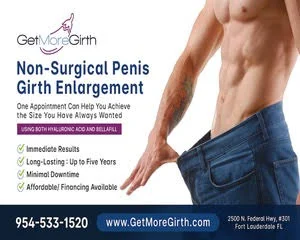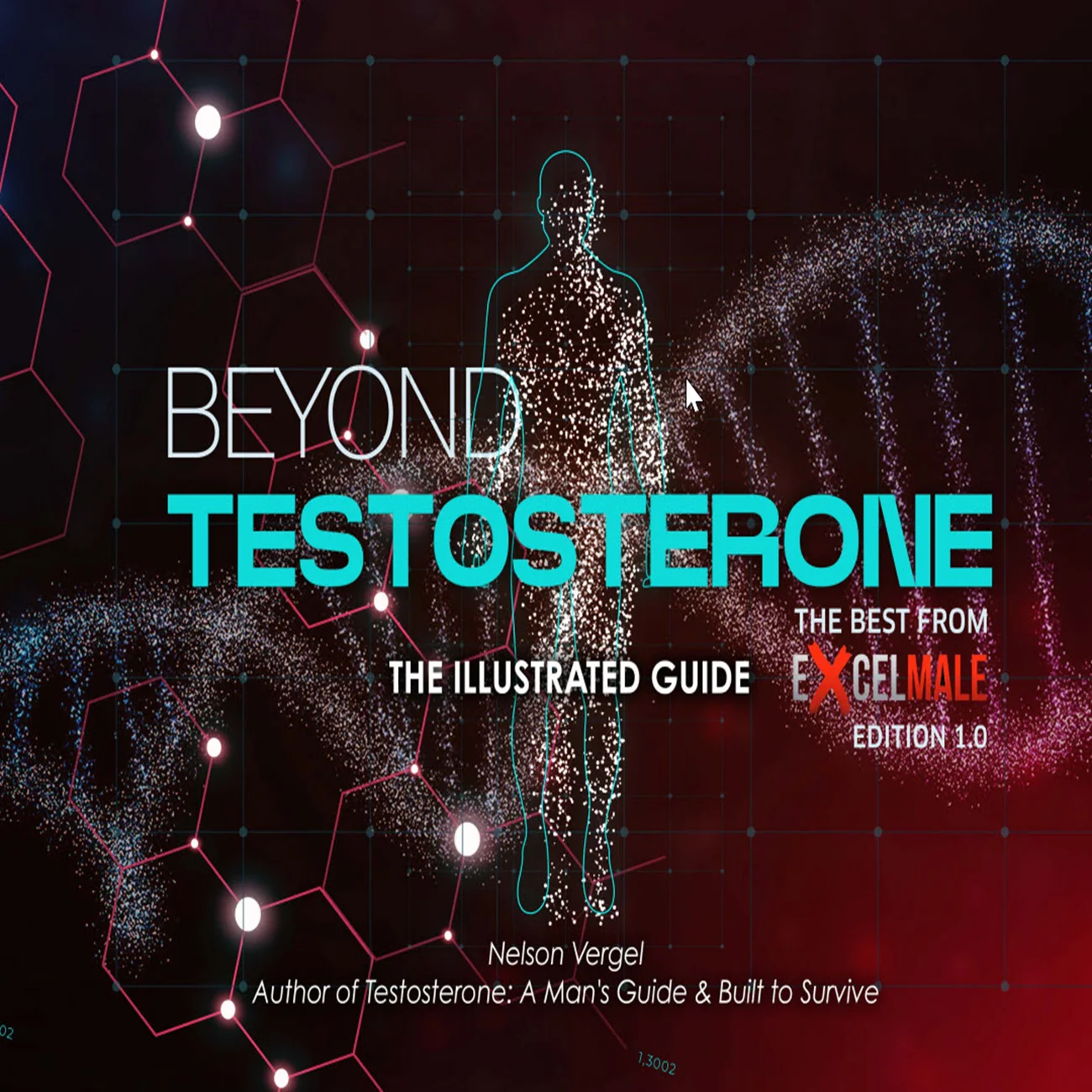Managing the Testosterone-to-Estradiol Ratio in Men on TRT
Introduction
Testosterone replacement therapy (TRT) in hypogonadal men often leads to an increase in estradiol (E2) levels due to the aromatization of testosterone. This alters the testosterone-to-estradiol (T:E) ratio, a metric sometimes discussed in managing TRT. A healthy balance between testosterone and estradiol is thought to be important for optimal male health, but the ideal T:E ratio remains unclear. A recent review noted a potentially beneficial T:E ratio range of roughly 10:1 to 30:1 (testosterone in ng/dL divided by estradiol in pg/mL), based on limited data, but emphasized that no definitive “optimal” value has been established and that further research is needed [1]. In practice, clinicians focus more on absolute hormone levels and patient symptoms than on a specific ratio, as no large studies have directly correlated a particular T:E ratio with overall health outcomes [1]. The goal in TRT management is to achieve physiological testosterone levels while keeping estradiol in an appropriate range that avoids both deficiency and excess.
Role of Estradiol in Male Physiology
Estradiol is not merely a byproduct of testosterone metabolism – it plays critical roles in the male body. Bone health is highly dependent on estradiol. Men with extremely low estrogen (as seen in aromatase deficiencies or over-suppression of E2) can develop osteoporosis; research suggests there is a threshold level of estradiol necessary to maintain bone density in men [1]. Conversely, excessive estradiol might adversely affect bone by suppressing testosterone or other mechanisms – notably, very high T:E ratios (meaning very low E2 relative to T) have been associated with reduced bone density in some observations [1]. Estradiol also contributes to body composition and metabolic health. A landmark trial by Finkelstein et al. demonstrated that when estradiol production was blocked in men (using an aromatase inhibitor during TRT), those men experienced significant increases in body fat – indicating that normal E2 levels help restrain fat accumulation [4].
Perhaps most importantly, estradiol is vital for sexual function and libido in men. The Finkelstein study found that both androgens and estrogens are required to maintain normal sexual desire and erectile function; men with suppressed E2 experienced a drop in libido and an increase in erectile dysfunction, even if testosterone was present [4]. This underscores that an adequate amount of estradiol is needed for sexual health. On the other hand, extremely elevated estradiol may also cause issues. For instance, a large case-control study in 2020 found that men with erectile dysfunction had significantly higher estradiol levels on average than men without sexual dysfunction, and elevated E2 was independently associated with ED even after accounting for body mass index [5]. This suggests that there is a U-shaped relationship where both too little and too much estradiol can impair sexual function. In summary, estradiol in men supports bone density, helps regulate fat and metabolism, and contributes to libido and erectile function. These benefits must be kept in mind when managing the T:E ratio on TRT – the aim is to avoid estradiol falling outside a healthy range.
T:E Ratio and Clinical Outcomes
Because of estradiol’s importance, the T:E ratio has been proposed as one factor influencing TRT outcomes. While comprehensive research is limited, a few emerging studies shed light on its significance. Baseline T:E ratio might predict response to TRT: A 2023 study of men with age-related hypogonadism found that men who had a relatively low T:E ratio before starting TRT were more likely to be “non-responders” (i.e. they derived less symptomatic benefit from therapy) [2]. In this study, testosterone and estradiol were measured before treatment; multivariate analysis identified a low T:E ratio as an independent predictor of poor clinical response. The authors calculated a threshold ratio of about 17:1 – men below this ratio (for example, low testosterone with relatively higher estradiol, as often seen in obese hypogonadal men) had higher odds of not improving on TRT [2]. This finding suggests that pre-existing estradiol elevations relative to testosterone could blunt the perceived benefits of therapy, potentially due to estrogen-mediated feedback or symptom effects. The authors therefore recommend measuring estradiol along with testosterone in the workup of hypogonadal men, since an abnormal ratio might identify patients needing closer follow-up [2].
Another outcome measure related to the T:E ratio is sexual function during treatment. A 2021 study by Çelik et al. focused on men with hypogonadotropic hypogonadism who were treated with either hCG or testosterone and examined spontaneous morning erections as an indicator of sexual health. They reported that the frequency of morning erections was highest when the T:E ratio after therapy was around 12:1 or greater – in fact, through ROC analysis they identified a ratio of approximately 12 as the cut-off associated with normal erectile frequency, with good sensitivity and specificity [3]. Men who failed to reach this ratio tended to have fewer spontaneous erections [3]. This implies that if estradiol is disproportionately high relative to testosterone (ratio well below 12), sexual function may be suboptimal. It is worth noting this was a small study, and the 12:1 ratio should not be taken as a universal target, but it aligns with the notion that keeping estradiol in check (but not abnormally low) is beneficial for sexual function. These studies collectively hint that the T:E balance can influence outcomes: too low a ratio (excess estradiol relative to testosterone) might hinder both the symptomatic improvement from TRT and aspects of sexual function. At the same time, as discussed earlier, an excessively high ratio (too little estradiol) can also be detrimental. Thus, maintaining a moderate ratio is likely ideal. The tentative “beneficial range” of roughly 10–30 cited by some experts encapsulates this idea, but it remains a broad guideline rather than a strict rule [1]. Individual variation is considerable, and patient well-being is the paramount indicator of success.
Managing Estradiol Levels During TRT
Routine estradiol suppression is not recommended for men on TRT, but management may be needed if estradiol levels rise to the point of causing symptoms. In a man receiving testosterone therapy, it is normal for estradiol to increase proportionally, often into the upper end of the male reference range. Many patients will tolerate this well and may even benefit from the higher-normal estrogen (e.g. better bone protection and mood). However, some men develop signs of estrogen excess such as gynecomastia (breast tissue swelling), nipple tenderness, water retention (edema), or mood swings. If such symptoms occur, the clinician should first confirm an elevated estradiol level with a sensitive assay and assess severity. Mild elevations without significant symptoms usually do not require intervention – in those cases, one can continue TRT and observe, since treating a number on labwork in the absence of symptoms can do more harm than good. When intervention is warranted (e.g. painful gynecomastia or persistent discomfort), a few strategies can be considered:
- Adjust the testosterone regimen: Often, lowering the TRT dose or switching to more frequent, lower-dose injections can reduce peak testosterone levels and thereby reduce the amount aromatized to estradiol. This can bring E2 down gradually. Ensuring the patient is not exceeding physiological T levels is a first step.
- Address risk factors for high aromatization: Weight loss is encouraged for overweight men on TRT because adipose tissue expresses aromatase. Losing fat mass can naturally decrease estradiol production over time. Limiting alcohol intake (since alcohol can increase estrogen) and other lifestyle modifications may also help.
- Aromatase inhibitors (AIs) – use with caution: Medications like anastrozole will lower estradiol by inhibiting its synthesis. While some clinics prescribe low-dose AIs alongside TRT to “fine-tune” the T:E ratio, current medical consensus advises against routine AI use in TRT [1][7]. The reasoning is that no substantial evidence shows improved outcomes from adding an AI, and there are significant risks to over-suppressing estradiol. Research has demonstrated that anastrozole can indeed raise testosterone and modestly reduce estradiol in men, but these changes did not translate into clear benefits in symptoms such as libido or erectile quality [7]. A 2020 review concluded that adding an AI didn’t improve sexual function or mood in men and should not be standard practice [7]. Moreover, reducing estradiol too much can produce adverse effects: men on AIs have reported joint pain, fatigue, lowered libido, and mood disturbances – essentially symptoms of estrogen deficiency. There are case reports of long-term AI therapy leading to bone density loss and osteoporosis due to chronically low estrogen [1]. Other unintended consequences noted with AI use in men include polycythemia (increased red blood cell count) and liver enzyme elevations, possibly related to altered metabolism [1]. Finally, estradiol is crucial for cholesterol balance; overly suppressing E2 might unfavorably impact lipid profiles. For all these reasons, aromatase inhibitors are only reserved for men with true estrogen excess symptoms that cannot be managed by adjusting TRT dose or other measures. If used, they should be given in the smallest effective dose and with close monitoring.
- Selective estrogen receptor modulators (SERMs): In certain cases of TRT-associated gynecomastia, a SERM like tamoxifen can be employed. Tamoxifen blocks estrogen receptors in breast tissue and is a standard treatment for pubertal gynecomastia. In adult men on TRT, a short course of tamoxifen may relieve breast tenderness and reduce glandular tissue without drastically lowering systemic estradiol (since it primarily acts locally at the receptor). Some endocrinologists prefer this approach if gynecomastia is the only issue, as it addresses the symptom while preserving the beneficial systemic effects of estradiol. However, SERMs are also not used prophylactically, only therapeutically in pronounced cases, and they carry their own side effects (hot flashes, etc.).
- Stopping or reducing TRT: In extreme cases where estradiol-related side effects are severe and not manageable (for example, severe gynecomastia or intolerable edema), it may be necessary to pause testosterone therapy. Once exogenous T is reduced, estradiol will fall. After addressing the issue (and perhaps treating the symptoms with medication or surgery if needed in case of gynecomastia), TRT can be reattempted at a lower dose or with adjunctive therapy as above.
Overall, the philosophy is to manage estradiol only if it causes clinical problems. Many men on TRT do not require any estrogen-specific treatment. It is important to educate patients that some increase in estradiol is normal and even desirable during TRT. Blindly adding an AI “just because” can undermine the benefits of TRT; for instance, it might negate testosterone’s positive effects on libido and bone by eliminating the estrogen component of those effects [4][7]. Thus, intervention is targeted and conservative. When undertaken, careful follow-up is needed to ensure estradiol does not become too low.
Monitoring and Guidelines
Expert guidelines concur that estradiol monitoring in men on TRT should be symptom-driven. The American Urological Association (AUA) guideline (2018) on testosterone therapy specifically recommends measuring serum estradiol only in patients who develop breast symptoms (such as gynecomastia or nipple swelling) during treatment or who present with those symptoms prior to initiating TRT [6]. In other words, if a man on TRT reports new breast tenderness or enlargement, an estradiol test is indicated to confirm if E2 is elevated [6]. If confirmed, this would direct management (as discussed above). On the other hand, the AUA and other societies do not advise routine estradiol testing at every check-up for men on TRT who have no symptoms of estrogen imbalance. Routine monitoring should focus on parameters like testosterone levels, prostate-specific antigen (PSA), hematocrit, lipid profile, etc., whereas estradiol is checked if and when a clinical indication arises. An elevated baseline estradiol prior to TRT initiation might warrant investigation for underlying causes (for example, obesity, liver disease, or in rare cases an estrogen-secreting tumor), and the AUA notes that men with high baseline E2 should be evaluated (often by an endocrinologist) before proceeding with therapy [6].
When estradiol is measured in a man, accuracy is important. Endocrine guidelines emphasize using a sensitive assay (liquid chromatography–mass spectrometry) for measuring male estradiol levels, as standard immunoassay kits are geared toward female ranges and can yield falsely high readings in the low male range [7]. If an estradiol test is needed, clinicians should ensure the lab uses an appropriate method to avoid misinterpretation. Furthermore, European guidelines (such as those from the European Academy of Andrology) mirror the AUA’s stance: they explicitly “do not recommend routine measurement of serum estradiol” in men on testosterone therapy [7]. They suggest checking E2 only in unusual scenarios, for instance if severe estrogen deficiency is suspected (manifested by osteoporosis or very low libido despite high T) [7]. This scenario could occur if a man is on an aromatase inhibitor or has unexplained symptoms of low estrogen – then confirming a very low E2 level would be useful. In summary, the consensus is to monitor estradiol selectively. Men on TRT should be educated about symptoms of high or low estrogen, and healthcare providers should remain vigilant for those, but in the absence of red flags, routine estradiol labs are not necessary. This approach avoids over-treatment and keeps the focus on clinical outcomes rather than arbitrary numbers.
Conclusion
Managing the T:E ratio in men on TRT requires a balanced approach that acknowledges estradiol’s dual role. Estradiol is beneficial for bones, metabolism, and sexual function, but excessive levels can cause specific side effects. Rather than striving for a strict numerical ratio, management is individualized: the testosterone dose is optimized to relieve hypogonadal symptoms, and estradiol is allowed to rise naturally unless it crosses into a symptomatic range. Outcome studies suggest that both low and high extremes of estradiol are undesirable, reinforcing the need for moderation. In practice, this means avoiding reflexive suppression of estrogen and instead using targeted interventions only when clinically indicated. Current evidence and guidelines advocate against routine use of aromatase inhibitors alongside TRT, given the lack of demonstrated benefit and potential harms [1][7]. Monitoring should prioritize patient well-being: regular follow-ups assess symptoms (including any signs of estrogen excess or deficiency), and estradiol measurements are reserved for those situations. By following these principles, clinicians can maximize the benefits of TRT while minimizing risks, effectively managing the T:E balance as part of a comprehensive treatment strategy.
More info: T/E ratios in Fertile and Subfertile Men - Excel Male TRT Forum
Validated References
- A Review on Testosterone: Estradiol Ratio—Does It Matter, How Do You Measure It, and Can You Optimize It?
Validated: Matches title, authors (Swislocki ALM, Eisenberg ML), publication date (August 30, 2024), and journal (World Journal of Men's Health). - Predictive factors for efficacy of testosterone replacement therapy for late-onset hypogonadism in Japanese men: a preliminary report
Validated: Matches title, authors (Kondoh N, Kaizuka Y, Nagasawa S, Togo Y), publication date (2023), and journal (Asian Journal of Andrology). - Role of testosterone to estradiol ratio in predicting the efficacy of recombinant human chorionic gonadotropin and testosterone treatment in male hypogonadism
Validated: Matches title, author (Çelik M), publication date (2021), and journal (Archives of Endocrinology and Metabolism). - Gonadal Steroids and Body Composition, Strength, and Sexual Function in Men
Validated: Matches title, authors (Finkelstein JS, Lee H, Burnett-Bowie S-AM, et al.), publication date (September 12, 2013), and journal (New England Journal of Medicine). - Different levels of estradiol are correlated with sexual dysfunction in adult men
Validated: Matches title, authors (Chen T, Wu F, Wang X, et al.), publication date (July 29, 2020), and journal (Scientific Reports). - Evaluation and Management of Testosterone Deficiency: AUA Guideline
Validated: Matches title, authors (Mulhall JP, Trost LW, Brannigan RE, et al.), publication date (August 2018), and journal (Journal of Urology). - Aromatase inhibitors and selective estrogen receptor modulators: Unconventional therapies for functional hypogonadism?
Validated: Matches title, authors (Awouters M, Vanderschueren D, Antonio L), publication date (November 2020), and journal (Andrology).
Last edited:













